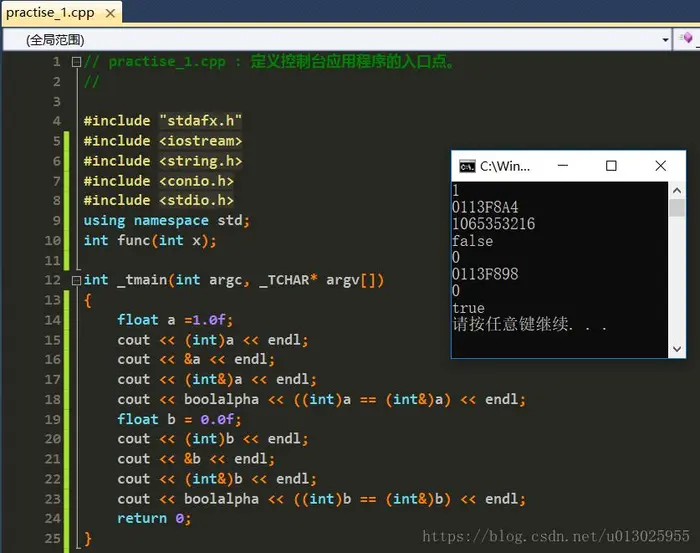1.练习代码
#include "stdafx.h"
#include <iostream>
#include <string.h>
#include <conio.h>
#include <stdio.h>
using namespace std;
int _tmain(int argc, _TCHAR* argv[])
{
float a =1.0f;
cout << (int)a << endl;
cout << &a << endl;
cout << (int&)a << endl;
cout << boolalpha << ((int)a == (int&)a) << endl;
float b = 0.0f;
cout << (int)b << endl;
cout << &b << endl;
cout << (int&)b << endl;
cout << boolalpha << ((int)b == (int&)b) << endl;
return 0;
}
2.关键点分析
2.1类型转换过程
#include "stdafx.h"
#include <iostream>
#include <string.h>
#include <conio.h>
#include <stdio.h>
using namespace std;
int _tmain(int argc, _TCHAR* argv[])
{
float a =1.0f;
cout << (int)a << endl;
cout << &a << endl;
cout << (int&)a << endl;
cout << boolalpha << ((int)a == (int&)a) << endl;
float b = 0.0f;
cout << (int)b << endl;
cout << &b << endl;
cout << (int&)b << endl;
cout << boolalpha << ((int)b == (int&)b) << endl;
return 0;
}
2.2运行结果

